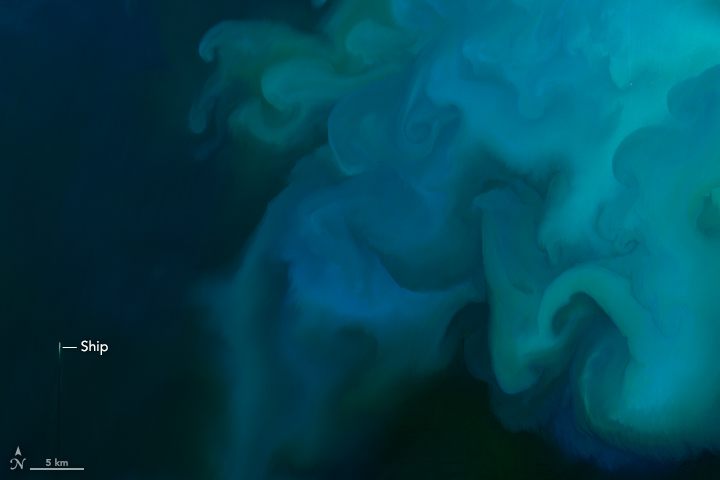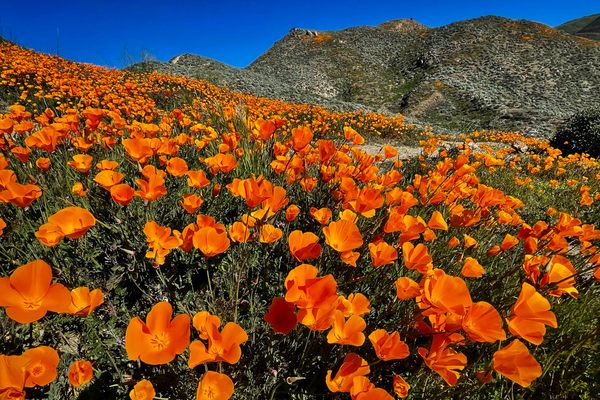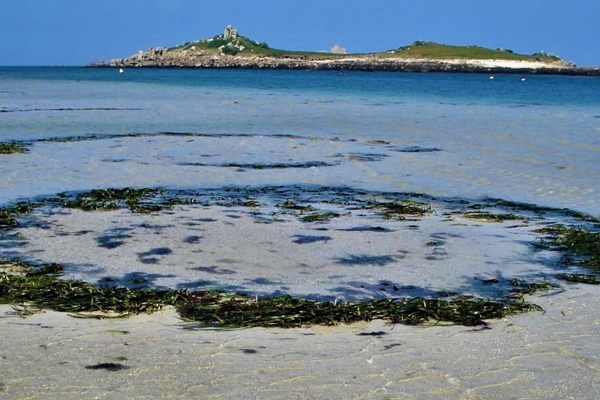What a Spring Bloom Looks Like at Sea
Phytoplankton get busy.

Out in the middle of the North Sea, between the coast of the United Kingdom and northern Europe, there aren’t any trees or flowering grasses to herald the arrival of spring. But, even in this watery part of the world, plants are bursting with new life. Over the weekend, NASA captured an image of a giant bloom of phytoplankton swirling through the sea.
Taken by the imager on the Landsat 8 satellite, this image shows the natural colors of the bloom, made up of legions of microscopic plants. Most likely, NASA explains, the lighter-colored swirls are made of one type of plankton, coccolithophores, and the greener areas are crowded with another, diatoms. A conveniently placed ship gives a sense of scale.
Spring blooms of phytoplankton occur in sub-polar waters, the North Atlantic, and waters off the coast. Because these plankton can reproduce so rapidly, the size of the population can grow exponentially.

In the spring, changes in the ocean—the amount of light and warmth available, the stratification of nutrients and salt—help create conditions where plankton can thrive. Scientists aren’t entirely sure what sets off a bloom, though: In a paper published earlier this year in Nature Geoscience, a team using specially designed robots reported that smaller, winter blooms could set off these spring explosions.
Phytoplankton aren’t the only underwater plants excited about spring, of course. One Twitter user noticed a patch of river moss covered in bubbles and wondered what the cause could be. The most likely explanation? The moss is photosynthesizing so hard that it’s expelling enormous (well, relatively) amounts of oxygens, which forms bubbles and floats to the river’s surface.


















Follow us on Twitter to get the latest on the world's hidden wonders.
Like us on Facebook to get the latest on the world's hidden wonders.
Follow us on Twitter Like us on Facebook